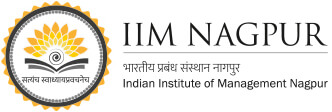One late night, while walking near a highway with my friend, I came across a visually impaired man trudging in the opposite direction. He was making different rhythms with his walking stick. I hadn’t even walked 20 meters past him, that a feeling of pity took over me and I couldn’t stop myself from wanting to help him out somehow. So, I went up to him and asked him, “Sir can I help you reach your place?” He replied, “Yes, there is a small pothole at the beginning of my street. Can you help me pass through it? From there I can go on my own”. And then we helped him pass that road. This seemingly normal episode triggered a chain of thoughts in my mind that was to stay for a long time with me. The first thought on my way back home was an obvious one, about how cruel nature is. By the time I reached home the disorder in nature was running through my mind. Days past this episode I happened to watch a Tamil movie called “Peranbu.” The movie talks about the struggles of a single parent, Amudhavan, in bringing up his daughter, who has cerebral palsy. The movie was thought provoking and made me question how we see life. It actually made me feel blind that I wasn’t seeing life or nature the way it’s supposed to be seen. And I was again thrown back to the question “What is order and what is disorder”? But this time the movie had left me with an answer.
The definition of order and disorder is framed by us. We humans assume that order is something that the majority of people have or something that’s easily found in the lives of many, while any slight deviation is labeled a disorder. If the majority of people are visually challenged then that would be an order. So the order and disorder are created by humans based on the ubiquity of anything. In nature’s creation, there are no orders or disorders. There are no superiors or inferiors. Everything is unique in nature’s design. And the most significant beauty of nature is also the uniqueness in everything. But people like us who are brought up in an environment that measures everything on the same scale struggle to admire the beauty of deviation, admire people with uniqueness, and even admire oneself. By contradicting nature, we developed a net of ethics, morals, and civilization all bundled up as a dome to hide ourselves from our true selves. And that’s why when the human is contradicting nature, he tends to lose his peace. After this takeaway from the movie, I came to a realization that during that moment of helping the blind man I was actually feeling pity for the uniqueness of that person’s situation, his inability to have what most of us do. But should uniqueness be pitied just because we’re brought up to see it as a loss and not as a distinction?
Nature always tries to maintain a balance. I had an abundance of sight and the other one was short of sight. In this case, I was merely a tool by nature to maintain the balance. From this I understood that fulfilling the balance in nature makes one happy and others too i.e. living in accordance to nature, not contradicting it. After all, it’s the least we could do for nature, our provider. This is not to say that we shouldn’t come forward to help anyone with uniqueness. But we should conquer the feeling of commiseration before we can help out in a way that matters, because ultimately all of us irrespective of our differences are living at the mercy of nature. And nature’s balance sheet doesn’t leave out deficits.


 Figure 1 – Source: NCDC, GOI
Figure 1 – Source: NCDC, GOI